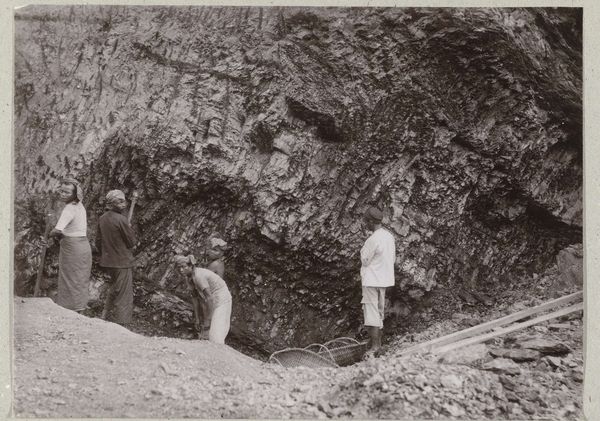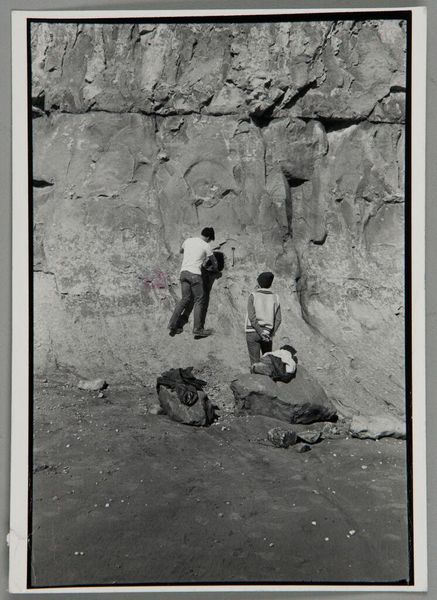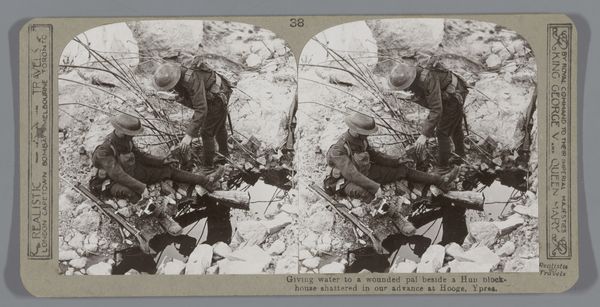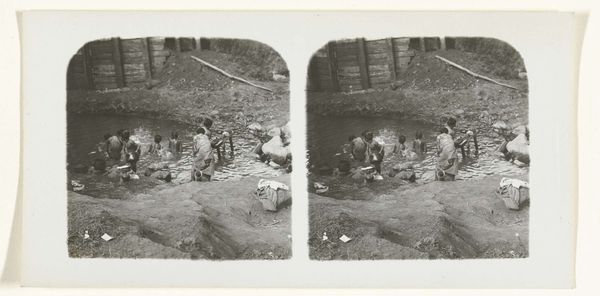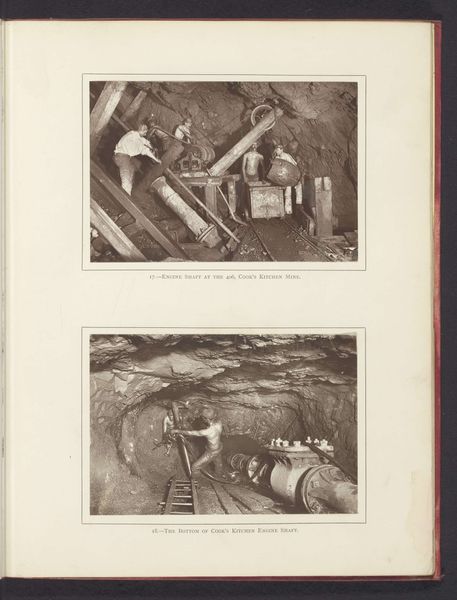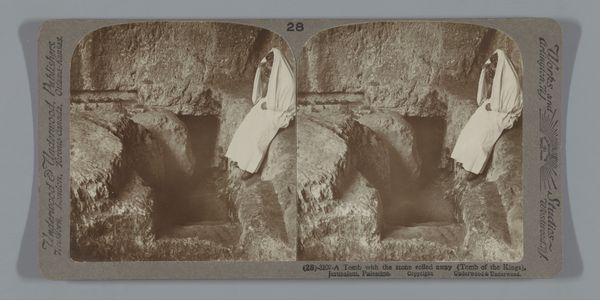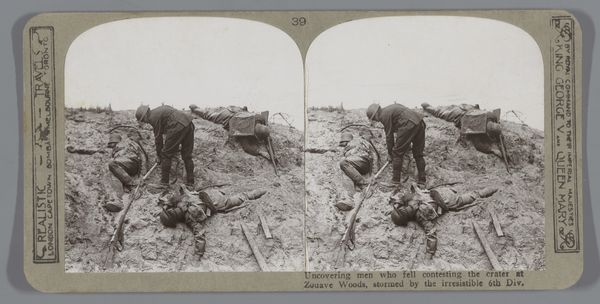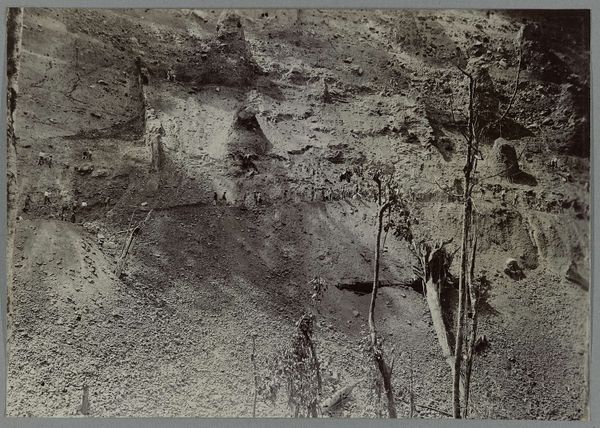
R.E.'s mine and counter-mine Messines Ridge, which dominated Ypres, blown up and stormed, June 7th,'17 Possibly 1917
0:00
0:00
photography, gelatin-silver-print
#
portrait
#
war
#
photography
#
gelatin-silver-print
#
realism
Dimensions: height 85 mm, width 170 mm
Copyright: Rijks Museum: Open Domain
Editor: This is a photograph titled "R.E.'s mine and counter-mine Messines Ridge, which dominated Ypres, blown up and stormed, June 7th, '17", probably from 1917. It's a gelatin-silver print depicting soldiers, I think. I'm immediately struck by the strong diagonals of the mine shafts, and the sort of claustrophobic feeling they create. What compositional elements stand out to you in this work? Curator: Formally, the image relies heavily on the stark contrast between light and shadow within the excavated space. Consider the way the photographer uses this chiaroscuro to articulate the volumes of the earthen walls, essentially sculpting the space through tonal variation. How does this method contribute to the narrative the picture attempts to express? Editor: I guess it emphasizes the depth of the excavation, and the perilous nature of their work? Is the medium – gelatin silver print – significant? Curator: Indeed. The gelatin silver print, particularly at this stage of photographic development, yields high resolution and tonal range, allowing for a meticulous record of visual detail. Notice, also, how the perspective flattens the image somewhat, almost abstracting the men and the mine into graphic shapes. Is that flatness then a representational method in its own right? Editor: I see what you mean. It becomes less about the individual soldiers, and more about the overall situation. The composition becomes almost symbolic. Curator: Precisely. Reflecting on the photographic medium, one can recognize how the sharp focus emphasizes the granularity and inherent materiality, acting as a physical document but also an emotive surface in dialogue with the viewer. This surface offers more than just documentary fact. Editor: This conversation helped me consider the photograph as more than just a historical record. It’s a complex visual construction. Curator: Agreed. By concentrating on its structure, we see that a work’s true content emerges not solely from what it depicts, but also in *how* it depicts it.
Comments
No comments
Be the first to comment and join the conversation on the ultimate creative platform.
